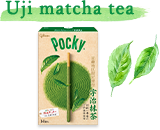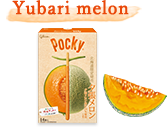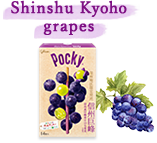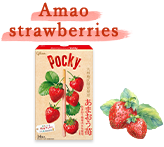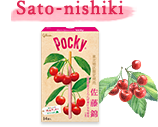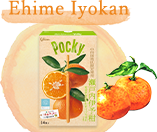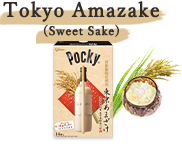The Sato Nishiki Cherry, the veritable queen of cherries,
got its start in a very special location blessed with the grandeur of nature.
That place is Higashine, a city of just under 50,000 people in central-east Yamagata.
This area also actively produces apples and peaches, among other fruit.
But their cherry production volume is the highest in all of Yamagata.
As it turns out, this is also where the Sato Nishiki Cherry got its start.
Seeking to trace the roots of this fruit, I made my way on foot through Higashine and its natural environs.
The tree is over 1,500 years old.
This symbol of Higashine stands watch over the schoolyard of an elementary school.
It is designated as a national monument.
Its lush green leaves signal that spring is coming to Higashine.
I first visited the large zelkova, a symbol of Higashine. It is 28 meters tall, with a trunk 16 meters around and 5 meters in diameter. Moreover, it is believed to be over 1,500 years old.
Considered Japan’s oldest zelkova tree, there is just one word for the way this vast monument stands over the schoolyard: awe-inspiring. In 1957, it was designated as a national monument.

Like a guardian deity watching over the people of Higashine, the zelkova stands proud.
Tadashi Konno, team director for the Higashine Tourism Products Association, said, “Higashine Elementary is where many of the children in Higashine go to school. It is like a protective spirit for the children of the area and the residents of Higashine.â€
This large zelkova tree has watched over Higashine for 1,500+ years. Realizing that it was already here when Sato Nishiki Cherries first came about ninety years ago is humbling.

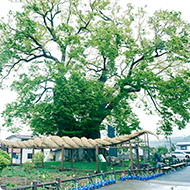
I found a heartwarming handwritten message near the tree.
Here is a walking tour map of the environs around the tree.
It had handwritten messages from students at Higashine Elementary School.
Their affection for Higashine came across in these handwritten notes and filled me with a happy mood.
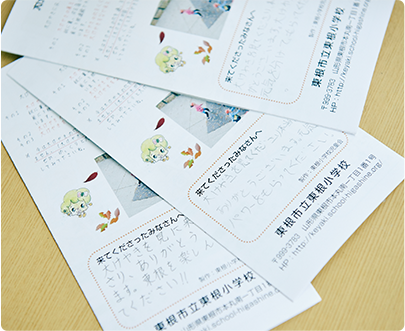
I returned to the station to pay my respects to Eisuke Sato, who gave his name to the Sato Nishiki Cherry.
Leaving the zelkova tree behind, I traveled five minutes by car to Higashine Elementary School, which is near Higashine Station. There I found a bronze statue to Eisuke Sato, inventor of the Sato Nishiki Cherry. Without further ado, I took a commemorative photo by his side.
Eisuke Sato spent many long years here developing the Sato Nishiki Cherry strain in earnest, and he became the pride and joy of Higashine, as this statue attests. He could be seen grasping a bunch of red cherries.

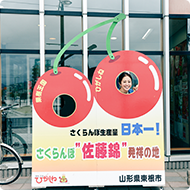
Desserts topped luxuriously with Sato Nishiki Cherry!
I savored a limited seasonal gelato that is so popular, people line up to order it.
If you love sweets and are in Higashine, a must-stop destination is the gelato shop at Yotteke Popora, a direct point of sale operated by JA Sakuranbo Higashine. For a one-month period starting on the second week of June, a cherry gelato is served in limited quantities on weekends only. This luxury sweet contains whole cherries! It was so delicious, I could see why they say even people from other prefectures flock to try it.
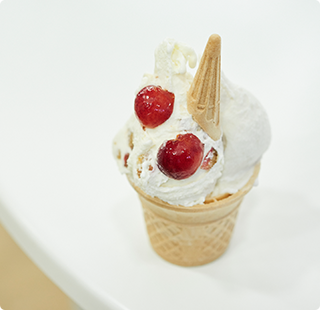

![]()

The large zelkova’s leaves turn in autumn and begin to fall. There is a legend that if you catch three leaves before they hit the ground, your wishes will come true...
Once fall comes around, I definitely want to visit again and try that myself!
Emperor Taisho also liked to come here. The outstanding view is nothing short of a spiritual zone.
A veteran guide of temple touring joins me to ascend the 1,015 steps to the top!
Yamagata Prefecture is surrounded by mountains on all sides. Seeking to experience that nature up close, I visited Yamadera, a slight jaunt off from Higashine proper. Strictly speaking, this temple is called Risshaku-ji. Having existed for 1,000 years, it is one of the foremost sacred sites in the Tohoku region, which itself it home to many temples and shrines. Emperor Taisho himself visited here and had lunch. This is commemorated with a special memorial hall.
I decided to try my hand at a series of 1,015 steps that span from the foot of the mountain up to its peak! Mr. Suzuki, a veteran guide, joins me on my quest.
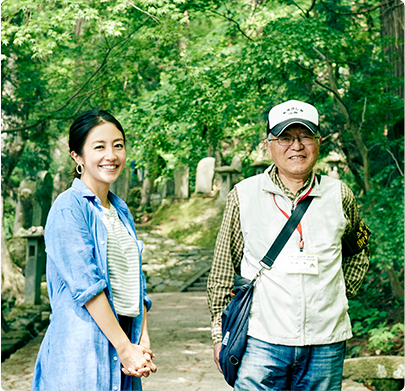
“Amidst the chirring of cicadas, quietness seeps into the rocks.â€
Yamadera is where the poet Basho penned this famous haiku.
On the hike up, we found a bronze statue of Matsuo Basho, Japan’s most famous haiku poet. The above haiku, known by everyone in Japan, was written almost 330 years ago in 1689 by Basho when he and his apprentice, Sora Kawai, visited Yamadera. At Semizuka, a site near the statue, there is also a stone tablet bearing the inscription of that poem.
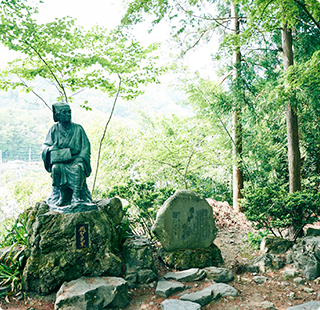
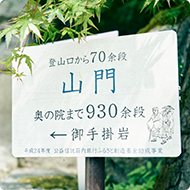
You can see the freshness and dewy moisture of the new leaves with each step up the mountain.
Mr. Suzuki said, “There are many broadleaf trees on Yamadera, and they become lush in spring through summer. This lets you take refuge from the rays of the sun, so it’s not that hot.â€
I could almost feel the negative ions on my skin.

After climbing 1,015 steps, a beautiful view awaits!
Forty minutes after walking up from the foothills, we reached the top of the mountain, with the Godaido Temple emerging beautifully into view. This unbeatable location looks out onto the Mt. Zao. Though perspiring, the cool breeze whisked past, making for a wonderfully relaxing moment. It was so worth the hike!


![]()
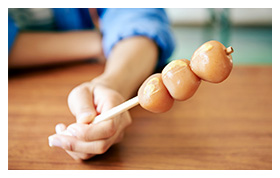
Perhaps as a reward for climbing Mt. Yamadera, they sell “tama-konnyaku,†balls of konjac root, a local Higashine specialty. These stamina-inducing treats are skewered on a stick and stewed simply in soy sauce. One is just 100 yen! I slathered Japanese mustard on mine and dug in!
This is one site you must visit if you make your way out to Higashine.
High-quality water and Higashine cuisine
I stayed at Nonoka Hongokan, the most historic inn at Higashine Onsen.
Returning to Higashine and checking in for the night.
I opted to stay at Nonoka Hongokan, a historic onsen hot springs founded 108 years before the springs were first discovered and dug out.
The down-to-earth inn has just 15 guest rooms.

The water has a pale amber color.
The gentle waters excel at promoting perspiration.
The waters are comparatively lukewarm at 41.8 degrees Celsius and won’t feel too hot. They are just comfortable enough to generate a healthy sweat, and you will want to linger in the comfortable tub.
Containing sulfate, alkaline minerals, and trace quantities of sulphur, the waters recover fatigue, improve cold extremities, and reduce muscle tension and pain.

At the back of the refined Japanese stylings of the room you will find a historic mirror stand.
The 10-tatami mat room gives off the faintly pleasant aroma of wood and creates a relaxing space.
A mirror stand at the back of the room is perfect for women doing their makeup.


A breakfast meal packed with the flavors of Higashine. The white rice here was amazing!
A great way to enjoy a leisurely morning is taking breakfast at the hot springs.
They have mountain vegetables steeped in soy sauce and other delicious dishes chock-full of the flavors of Higashine.
This morning, I was blown away at the quality of the Tsuyahime rice, a brand-name rice from Yamagata.
This was truly a satisfying trip around Higashine, home of the Sato Nishiki Cherry, and its environs.
In the next installment, we’ll go cherry picking!
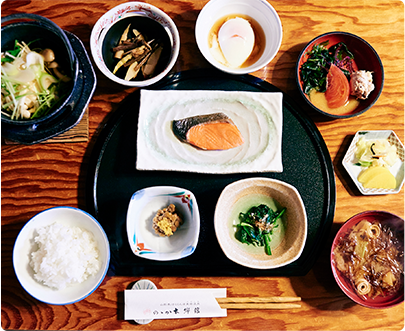

This ticket lets you select from three baths among those offered at Sakuranbo Higashine Onsen. Perfect for those who want to take a leisurely stroll through the streets of this hot springs resort and try various baths. These tickets can be bought at places like bathing facilities and at the Higashine Tourism Products Association.


The home of Sato Nishiki Cherries was a place brimming with nature, food, and hot springs
That includes “stamina konjac,†gelato, and white rice!
What a fulfilling journey through Higashine and its delicious foods.

















